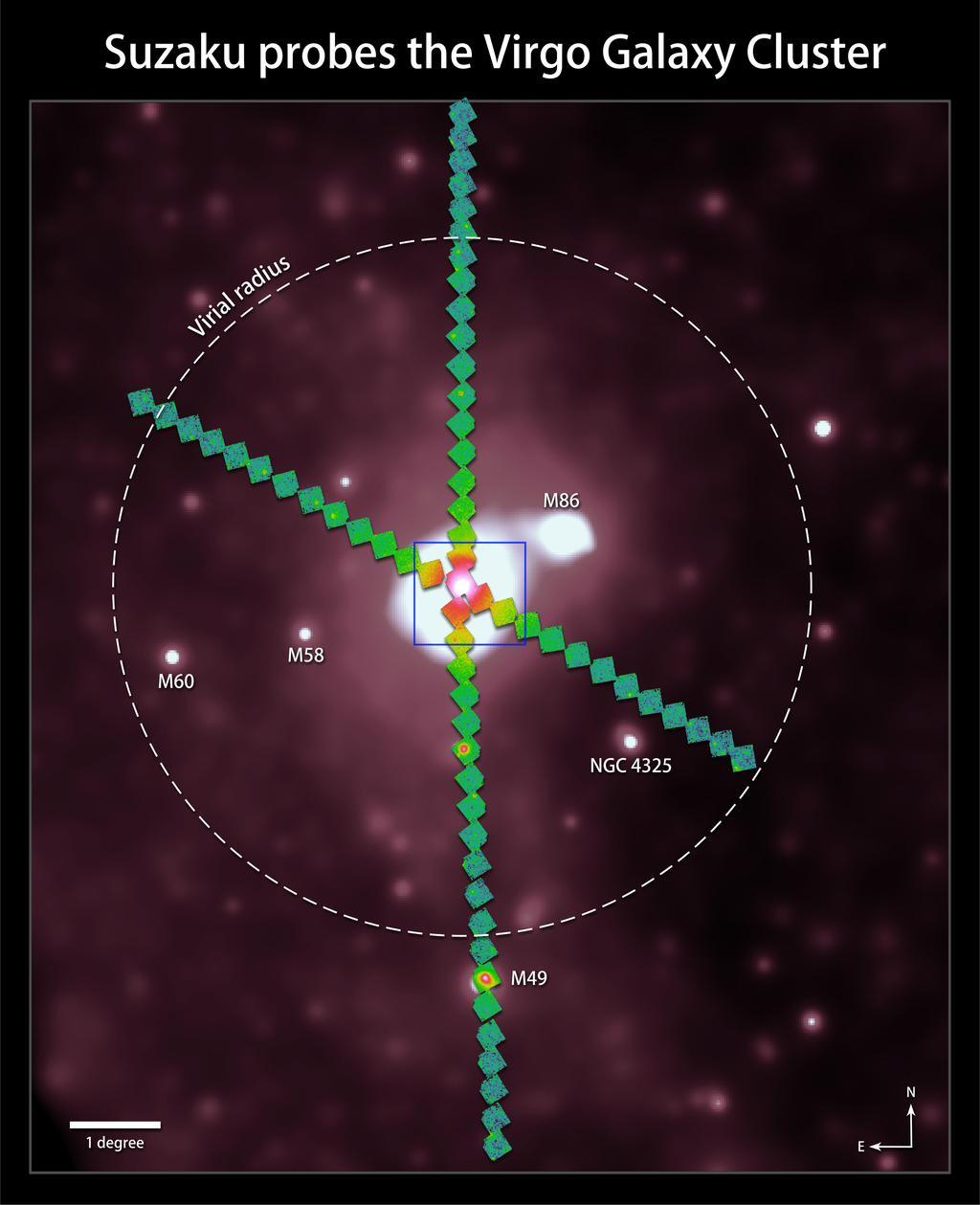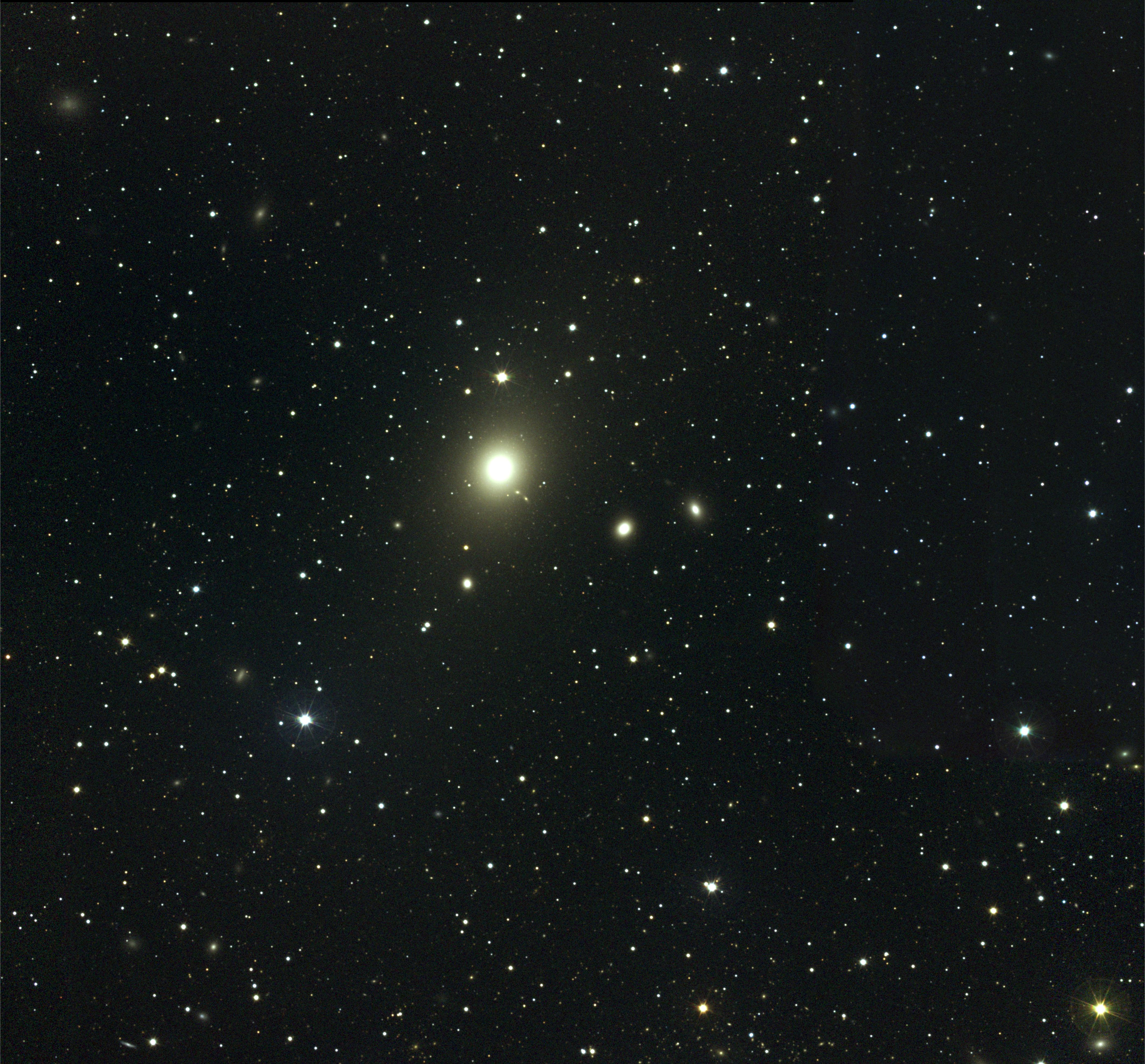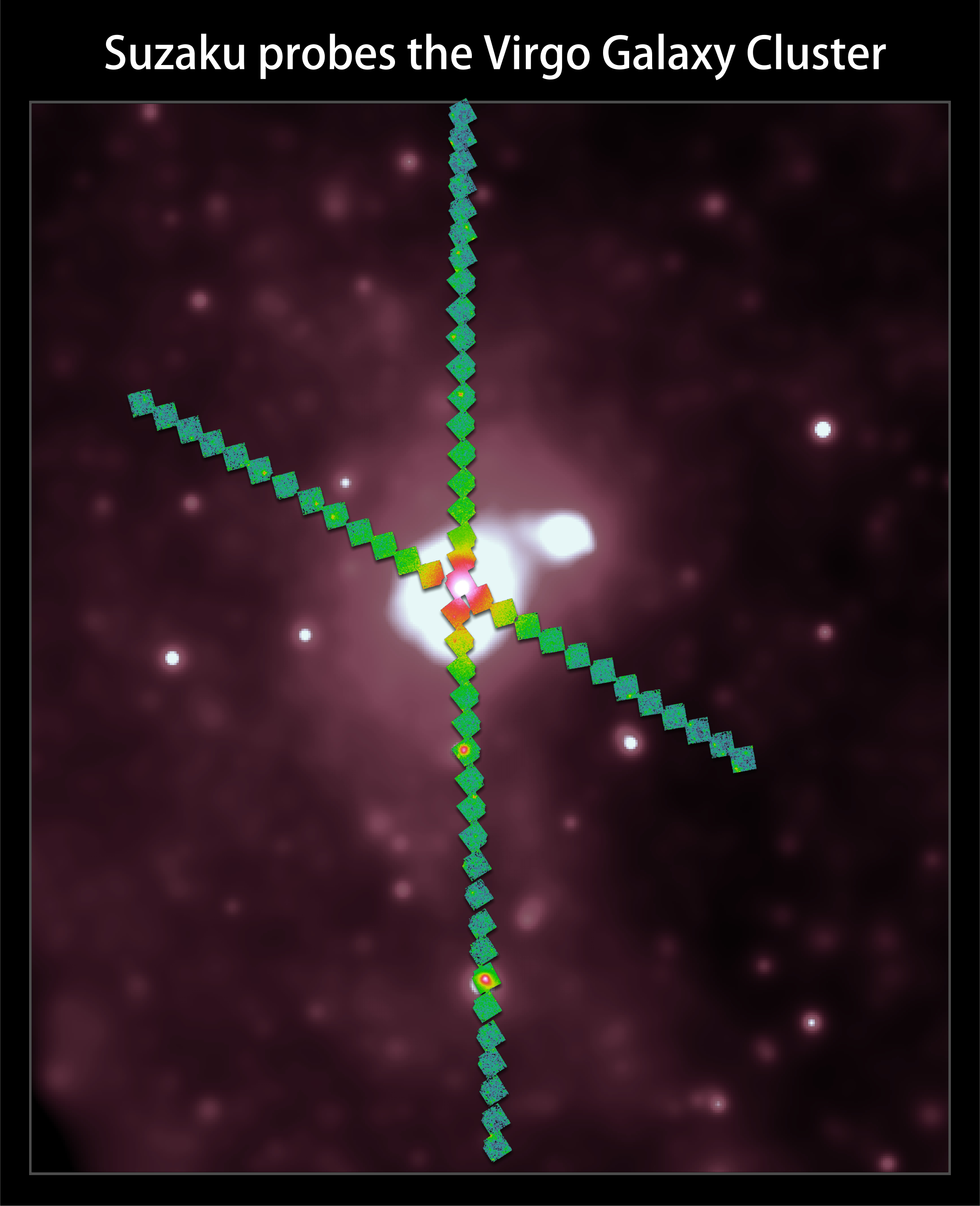Universe
ID: 12028

A new survey of hot, X-ray-emitting gas in the Virgo Galaxy Cluster shows that the elements needed to make stars, planets and people were evenly distributed across millions of light-years early in cosmic history, more than 10 billion years ago.
The Virgo Cluster, located about 54 million light-years away, is the nearest galaxy cluster and the second brightest in X-rays. The cluster is home to more than 2,000 galaxies, and the space between them is filled with a diffuse gas so hot it glows in X-rays.
Using Japan's Suzaku X-ray satellite, a team led by Aurora Simionescu, an astrophysicist at the Japan Aerospace Exploration Agency (JAXA) in Sagamihara, acquired observations of the cluster along four arms extending up to 5 million light-years from its center.
Heavier chemical elements from carbon on up are produced and distributed into interstellar space by stars that explode as supernovae at the ends of their lifetimes. This chemical dispersal continues at progressively larger scales through other mechanisms.
Different classes of supernovae produce different chemical compositions. Surveying the distribution of these elements over a vast volume of space, such as a galaxy cluster, helps astronomers reconstruct how, when, and where they were produced. Once the chemical elements made by supernovae are scattered and mixed into interstellar space, they become incorporated into later generations of stars. The overall composition of a large volume of space depends on the mix of supernova types contributing to it.
The survey mapped iron, magnesium, silicon and sulfur all the way across a galaxy cluster for the first time. The elemental ratios are constant throughout the entire volume of the cluster and roughly consistent with the composition of the sun and most of the stars in our own galaxy.
The study shows that the same ratio of supernova types to be responsible for the solar system's makeup was at work throughout the universe. This likely happened when the universe was between 2 and 4 billion years old, a period when stars were being formed at the fastest rate in cosmic history.


Suzaku Finds Common Chemical Composition at Largest Cosmic Scales

The Virgo Cluster, located about 54 million light-years away, is the nearest galaxy cluster and the second brightest in X-rays. The cluster is home to more than 2,000 galaxies, and the space between them is filled with a diffuse gas so hot it glows in X-rays.
Using Japan's Suzaku X-ray satellite, a team led by Aurora Simionescu, an astrophysicist at the Japan Aerospace Exploration Agency (JAXA) in Sagamihara, acquired observations of the cluster along four arms extending up to 5 million light-years from its center.
Heavier chemical elements from carbon on up are produced and distributed into interstellar space by stars that explode as supernovae at the ends of their lifetimes. This chemical dispersal continues at progressively larger scales through other mechanisms.
Different classes of supernovae produce different chemical compositions. Surveying the distribution of these elements over a vast volume of space, such as a galaxy cluster, helps astronomers reconstruct how, when, and where they were produced. Once the chemical elements made by supernovae are scattered and mixed into interstellar space, they become incorporated into later generations of stars. The overall composition of a large volume of space depends on the mix of supernova types contributing to it.
The survey mapped iron, magnesium, silicon and sulfur all the way across a galaxy cluster for the first time. The elemental ratios are constant throughout the entire volume of the cluster and roughly consistent with the composition of the sun and most of the stars in our own galaxy.
The study shows that the same ratio of supernova types to be responsible for the solar system's makeup was at work throughout the universe. This likely happened when the universe was between 2 and 4 billion years old, a period when stars were being formed at the fastest rate in cosmic history.


Credits
Francis Reddy (Syneren Technologies): Lead Science Writer
Francis Reddy (University of Maryland College Park): Lead Graphics
Francis Reddy (University of Maryland College Park): Visualizer
Francis Reddy (University of Maryland College Park): Lead Graphics
Francis Reddy (University of Maryland College Park): Visualizer
Please give credit for this item to:
NASA's Goddard Space Flight Center. However, individual items should be credited as indicated above.
NASA's Goddard Space Flight Center. However, individual items should be credited as indicated above.
Science Paper:
http://iopscience.iop.org/article/10.1088/2041-8205/811/2/L25
Short URL to share this page:
https://svs.gsfc.nasa.gov/12028
Mission:
Suzaku
This item is part of this series:
Astrophysics Stills
Keywords:
SVS >> Galaxy
SVS >> X-ray
SVS >> Astrophysics
SVS >> Universe
SVS >> Space
SVS >> Suzaku
NASA Science >> Universe
http://iopscience.iop.org/article/10.1088/2041-8205/811/2/L25
Short URL to share this page:
https://svs.gsfc.nasa.gov/12028
Mission:
Suzaku
This item is part of this series:
Astrophysics Stills
Keywords:
SVS >> Galaxy
SVS >> X-ray
SVS >> Astrophysics
SVS >> Universe
SVS >> Space
SVS >> Suzaku
NASA Science >> Universe











